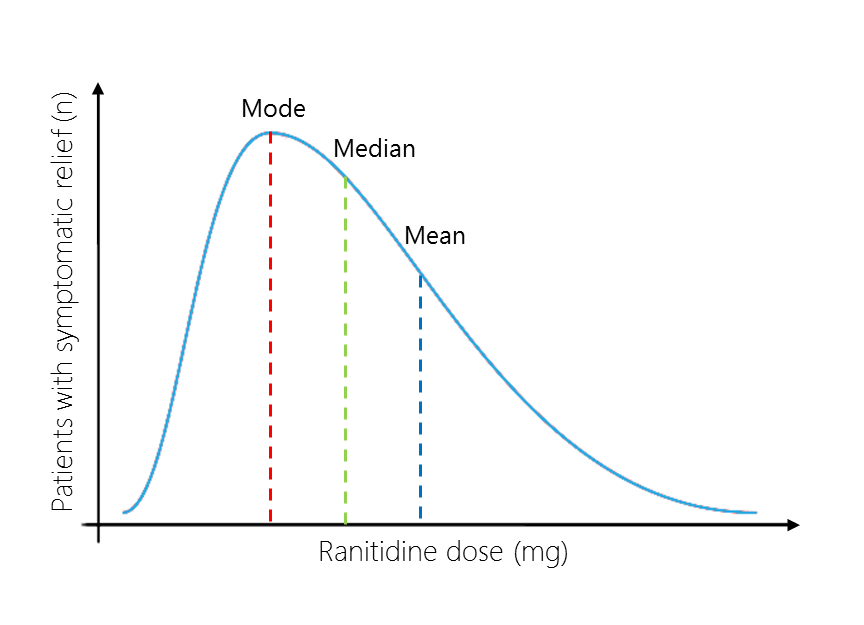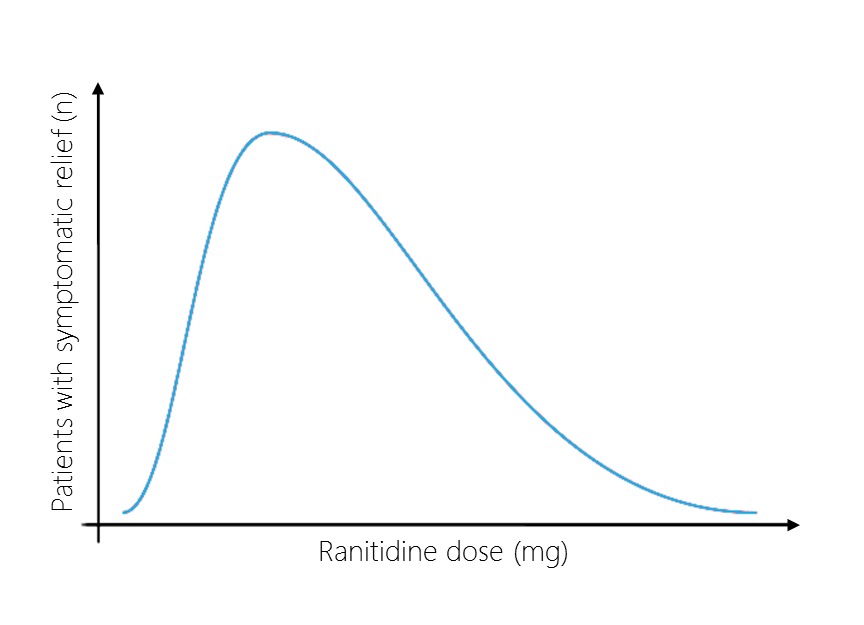WBR0742: Difference between revisions
No edit summary |
m (refreshing WBR questions) |
||
| Line 1: | Line 1: | ||
{{WBRQuestion | {{WBRQuestion | ||
|QuestionAuthor={{YD}} (Reviewed by Serge Korjian) | |QuestionAuthor= {{YD}} (Reviewed by Serge Korjian) | ||
|ExamType=USMLE Step 1 | |ExamType=USMLE Step 1 | ||
|MainCategory=Biostatistics/Epidemiology | |MainCategory=Biostatistics/Epidemiology | ||
Latest revision as of 01:32, 28 October 2020
| Author | [[PageAuthor::Yazan Daaboul, M.D. (Reviewed by Serge Korjian)]] |
|---|---|
| Exam Type | ExamType::USMLE Step 1 |
| Main Category | MainCategory::Biostatistics/Epidemiology |
| Sub Category | SubCategory::Gastrointestinal |
| Prompt | [[Prompt::A researcher is studying the optimal dose of ranitidine required for relief of gastroesophageal reflux disease (GERD) symptoms. He enrolls 350 patients with endoscopy-confirmed GERD, and 100 unconfirmed GERD patients whose symptoms are consistent with disease. The patients receive oral ranitidine in 50 mg increments every 24 hours until they reach the dose that provides them with symptomatic relief. Following data collection, the researcher demonstrates his findings on the graph shown below. Based on his findings, which of the following statements regarding the mean, median, and mode is correct? |
| Answer A | [[AnswerA::Median > Mode > Mean]] |
| Answer A Explanation | AnswerAExp::This is not the relationship in positively skewed graphs. |
| Answer B | [[AnswerB::Mode > Median > Mean]] |
| Answer B Explanation | AnswerBExp::This would be a correct answer in negatively skewed graphs. |
| Answer C | [[AnswerC::Mean > Median > Mode]] |
| Answer C Explanation | AnswerCExp::This is the correct relationship between mean, median, and mode in positively skewed graphs. |
| Answer D | [[AnswerD::Mean > Mode > Median]] |
| Answer D Explanation | AnswerDExp::This is not the relationship in positively skewed graphs. |
| Answer E | [[AnswerE::Mode > Mean > Median]] |
| Answer E Explanation | AnswerEExp::This is not the relationship in positively skewed graphs. |
| Right Answer | RightAnswer::C |
| Explanation | [[Explanation::
The three measures of central tendency are the mean, median and the mode. In this example, the mean refers to the sum of optimal doses for each patient divided by the total number of patients studied; the mode refers to the most frequent dose at which optimal symptom control occur; and the media refers to the middle dose value used among all studied doses. Based on the graph displayed, the findings demonstrate a positively skewed distribution. The easiest way to recognize a skew is to follow the tail of the graph (tail on the positive end). In such graphs, the relationship of the mean, median, and mode are always as follows: mean > median > mode. In contrast, a negatively skewed graph, where the tail is on the negative end, the relationship is always as follows: mode > median > mean. Notably, in both positively and negatively skewed graphs, the median is the best measure of central tendency as it is least affected by outliers. Graphs with normal distribution typically have mean = median = mode. |
| Approved | Approved::Yes |
| Keyword | WBRKeyword::Median, WBRKeyword::Mode, WBRKeyword::Mean, WBRKeyword::Skew, WBRKeyword::Skewed, WBRKeyword::Normal distribution |
| Linked Question | Linked:: |
| Order in Linked Questions | LinkedOrder:: |
